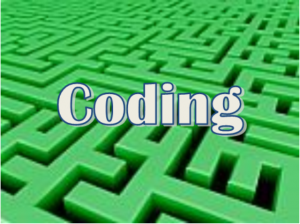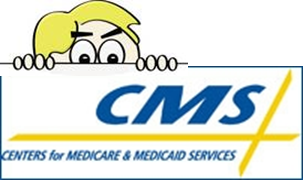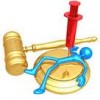 Coding Alert for P-Stim™ AGAIN!
Coding Alert for P-Stim™ AGAIN!
Writing for the Academy: R.L. Ramsdell PhD, FACFEI, CFC, DABFE, LFMAAMA. Executive Director.
March 21, 2014
We are once again receiving coding questions and issues regarding the P-Stim™.
We originally published a special alert for this product on September 15, 2013 when members reported the sales representatives were recommending CPT 64553 “implant” code for the procedure and a billing of L8680 for the electrodes.
In our original alert to our members, we stated;
The Academy has received many recent inquires on the proper coding for electrical stimulation of auricular acupuncture points using the P-Stim™ device. Various coding scenarios were submitted from concerned members, including “stealth” coding using implant codes, as offered by some sales representatives as well as their claims of “coverage” by “Medicare and Most Major Medical Plans”.
Our investigations have shown these claims for the most part, are false and may be designed to create an unrealistic anticipation of payment and/or offer various “stealth coding” scenarios that could qualify the procedure for payment based solely on submission of inaccurate codes BUT would put the practitioner “at significant risk” for allegations of fraud or abuse on audit.
According to recent member reports, the sales people have now “altered” their coding suggestion to use CPT implant code 64555 for the procedure and E1399 for the electrodes.
First, let’s look at the FDA approval for the unit. You can view it for yourself at: http://www.accessdata.fda.gov/cdrh_docs/pdf5/K050123.pdf
- Trade or Proprietary Name: P-Stim
- Common Name: Electro-acupuncture device
- Classification Name: Electro-acupuncture stimulator
- Classification: Unclassified
Predicate Device: The legally marketed predicate device to which the P-Stim is substantially equivalent is the Acu-Stim (KO14273).
Intended Use:The P-Stim is intended for use as an electro-acupuncture device to stimulate appropriate auricular acupuncture points.
Device Description: The P-Stim is a miniaturized, battery-powered, transcutaneous electrical nerve stimulator that has a pre-programmed frequency, pulse, and duration for the stimulation of auricular acupuncture points.
The device connectsvia three stainless steel wires to acupuncture needles that have been applied to the appropriate auricular acupuncture points. The device is powered by three zinc air batteries, each with a voltage of 1.4 V. The device is on for 180 minutes, then off for 180 minutes, for a maximum period of up to 96 hours.
Based on the unit’s approval and accepted indications, we must again stress the most “basic instructions” on code selection contained in the CPT manual that prohibits misrepresentation through “stealth” coding.
Select the name of the procedure or service that accurately identifies the service performed. Do not select a CPT code that merely approximates the service provided. If no such specific code exists, then report the service using the appropriate unlisted procedure or service code.
Medicare entertained a request from P-Stim in their May 29, 2013 HCPCS Meeting. Agenda item #6 Stated; Topic/Issue:Request to establish a new Level II HCPCS code to identify a miniaturized device designed to administer auricular point stimulation treatment over several days. Trade name: PSTIM. Applicant’s suggested language: “P-STIM: percutaneous auricular neurostimulator with 3 needles; used for before and after measurements of sympathovagal balance”. According to the requester, the P-STIM is a miniaturized device designed to administer auricular point stimulation treatment over several days. Point stimulation by the P-STIM is mainly used to treat pain. The P-STIM is a wearable device this is designed to administer continuous pulses of a low-level electrical current at the ear over several days. Electrical pulses are emitted though three selectively positioned acupunctures needles. The P-STIM is worn for four days on and three days off and is removed by the patient on the fourth day. The average patient usually requires 1-12 weeks of treatment. According to the requester, the patient population for which the device is clinically indicated is patients who suffer from diagnosis as: migraine, chronic pain (lower back or otherwise), shingles, fibromyalgia, refractory neuropathy, central sensitization disorders and PTSD. The decision was; A national program operating need was NOT identified by Medicare, Medicaid, or the private insurance sector to establish a code to identify this device. Based preliminary benefit category analysis, we believe that there would be NO Medicare payment for these items.
Major Medical Coverage:
Non-coverage of the services may be found in their Acupuncture policies, complementary and alternative medicine or, if specifically addressed, like with the “Blues”, in a policy for “CRANIAL ELECTROTHERAPY STIMULATION (CES) AND AURICULAR ELECTROSTIMULATION”. Others, like Health Net, for example, just include the service under their non-payable “investigational procedures” listing.
Opinion on the use of CPT implant code 64555 for the procedure and E1399 for the electrodes.
In reviewing the literature and rationale from the company, we see that they are making a “leap” to now declare the unit to be a “percutaneous electronic nerve stimulator” (PENS) and applicable to the coverage provisions and coding applicable to those units INCLUDING the implant procedure code 64555 Percutaneous implantation of neurostimulator electrodes; peripheral nerve.
We must again take exception with the rationale, based both on the coding and on the “off label” use that exceeds the FDA approval of the unit as an electro-acupuncture device to stimulate appropriate auricular acupuncture points.
We must also take exception that the electrodes are “implanted” when the FDA 510(k) approval specifically states “The P-Stim™ device connects to 3 inserted acupuncture needles with caps and wires.”
Typically carriers interpret “implant” as being a surgical procedure way beyond an “insertion” of needles.
Last, we must object to assuming that the implant is to the “nerve(s)” since the approval also specifies that the use of the “stylus” is to identify the appropriate auricular acupuncture points.
Academy Conclusion On Proper Coding: Based on the available evidence, the Academy finds that the representative claims that “P-stim is reimbursed by Medicare and Most Major Medical Plans” and should be billed under the 64555 code are inaccurate.
The Academy therefore suggests the following as “applicable” to the P-Stim™
CPT:
- 97813 Acupuncture, 1 or more needles; with electrical stimulation, initial 15 minutes of personal one-on-one contact with the patient
- 97814 Acupuncture, 1 or more needles; with electrical stimulation, each additional 15 minutes of personal one-on-one contact with the patient, with re-insertion of needle(s) (List separately in addition to code for primary procedure)
HCPCS: Is the Most specific.
- S8930 Electrical stimulation of auricular acupuncture points; each 15 minutes of personal one-on-one contact with the patient.
- (Developed and became effective April 1, 2012.)
There is no specific supply code for the unit(s) and therefore you would use E1399 with a description of “P-Stim electro-acupuncture device”.
In our opinion, billing for application of the unit under 64555 is NOT appropriate and such reporting should be restricted to 64999 with an accurate description of the procedure to avoid any misrepresentation to the carrier. We remind everyone that the fact you billed using an approximate fit code which was paid, does NOT mean you billed it correctly. For example, Medicare will pay the codes you billed because they are valid codes and they are assuming those are the procedures you performed. Your PAIN will come with audit when your notes do NOT support a surgical implant.
We also feel proper billing for the supplies (unit kits) should be reported under the E1399 NOS supply code or CPT general supply code 99070, with an accurate description of “electro-acupuncture device” including the unit name. Most carriers will expect you to submit an invoice with the claim.
We feel any other coding scenarios would be a misrepresentation of the service performed, subject to recovery upon carrier audit and possible allegations of fraud or abuse.
Again, our opinion here is on the “Coding” ONLY and not the quality or efficacy of the actual equipment, technology or potential therapeutic benefit to the patient.
Members should consider the potential benefit to the patient within the reality of a “non-covered service” and provide the patient with applicable notice of personal liability.
 One of the more positive sections in the Affordable Care Act gave a temporary pay hike to the paltry amount primary care physicians were paid by Medicaid for evaluations and vaccine administration. Under the law, Medicaid fees for primary care increased in 2013 and 2014 to the same amount paid under Medicare. The raise was in hope that higher rates might entice more physicians to accept Medicaid as millions of more people were added to the coverage roles under the law.
One of the more positive sections in the Affordable Care Act gave a temporary pay hike to the paltry amount primary care physicians were paid by Medicaid for evaluations and vaccine administration. Under the law, Medicaid fees for primary care increased in 2013 and 2014 to the same amount paid under Medicare. The raise was in hope that higher rates might entice more physicians to accept Medicaid as millions of more people were added to the coverage roles under the law.

 What’s Up With Guidance?
What’s Up With Guidance?
 Coding Alert for P-Stim™ AGAIN!
Coding Alert for P-Stim™ AGAIN! National CERT data showed projected rises in improper payments for outpatient E&M services for 2013 with CPT codes 99205 and 99215 being in the top 15 codes identified for improper payment. Previous review of high level outpatient E&M services resulted in high error rates because services were frequently billed at a higher level than could be supported for medical necessity by the medical record.
National CERT data showed projected rises in improper payments for outpatient E&M services for 2013 with CPT codes 99205 and 99215 being in the top 15 codes identified for improper payment. Previous review of high level outpatient E&M services resulted in high error rates because services were frequently billed at a higher level than could be supported for medical necessity by the medical record.
